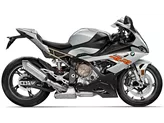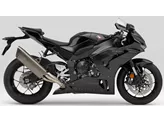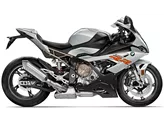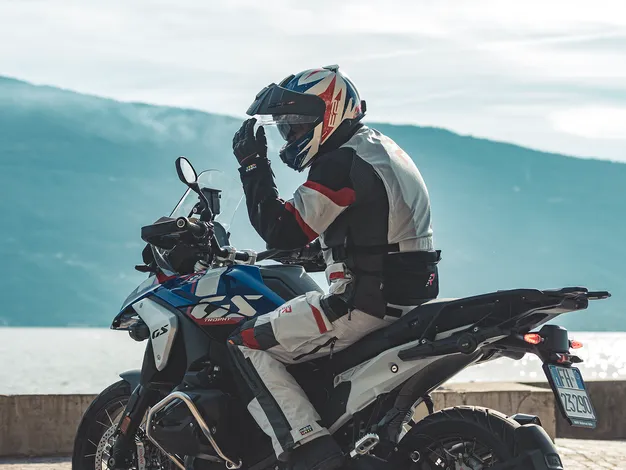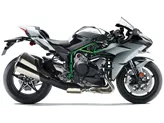BMW S 1000 RR 2019 vs. Yamaha R1 2019

BMW S 1000 RR 2019

Yamaha R1 2019
Overview - BMW S 1000 RR 2019 vs Yamaha R1 2019
The BMW S 1000 RR 2019 and the Yamaha R1 2019 are both high-performance supersport motorcycles, but they have some key differences in terms of their technical specifications and strengths.
In terms of engine and drive train, the BMW S 1000 RR has a slightly larger bore and stroke compared to the Yamaha R1. It also has a higher engine power of 207 HP and torque of 113 Nm, compared to the Yamaha R1's 200 HP and 112.4 Nm. Both bikes have a compression ratio of 13 and feature a 4-cylinder DOHC engine with 4 valves per cylinder. The BMW S 1000 RR has a displacement of 999 ccm, while the Yamaha R1 has a displacement of 998 ccm.
Both motorcycles have upside-down telescopic fork front suspension and an aluminum frame. However, the BMW S 1000 RR has a Twin Tube, Load-bearing engine frame type, while the Yamaha R1 has a Deltabox frame type. Both bikes have double disk front brakes and advanced rider assistance systems such as launch control and traction control.

BMW S 1000 RR 2019
In terms of dimensions and weights, the BMW S 1000 RR has a slightly longer wheelbase of 1441 mm compared to the Yamaha R1's 1405 mm. The seat height of the BMW S 1000 RR is 824 mm, while the Yamaha R1 has a higher seat height of 855 mm. The BMW S 1000 RR also has a slightly lower kerb weight of 197 kg compared to the Yamaha R1's 199 kg. Both motorcycles have a fuel tank capacity of around 16.5-17 liters.
The BMW S 1000 RR has several strengths, including a very linear power delivery, wide rev range, and excellent dosing. It also has a top-performing DDC (Dynamic Damping Control) system and a super electronics package. The shift assistant of the BMW S 1000 RR is also highly praised. Additionally, the BMW S 1000 RR offers a more active and sportier seating position and features high-quality details such as the frame, swingarm, and display.
On the other hand, the Yamaha R1 is known for its powerful engine and clean response. In the right hands, it can be a very fast track bike. The Yamaha R1 also has perfectly tuned electronics.

Yamaha R1 2019
However, the BMW S 1000 RR does have some weaknesses. Some riders feel that the linear power delivery has made the bike lose a certain amount of "thrill". Additionally, the machine is considered almost "too perfect" by some, which may not appeal to riders looking for a more raw experience. The menu navigation of the BMW S 1000 RR also takes some time to get used to.
The Yamaha R1, on the other hand, has a weakness in its ABS system, which some riders find not 100 per cent satisfactory.
In summary, the BMW S 1000 RR 2019 and the Yamaha R1 2019 are both powerful supersport motorcycles with their own strengths and weaknesses. The BMW S 1000 RR offers a more controllable and linear power delivery, while the Yamaha R1 has a powerful engine and clean response. Ultimately, the choice between the two will depend on the rider's preferences and priorities.
Technical Specifications BMW S 1000 RR 2019 compared to Yamaha R1 2019
Pros and Cons in comparison
Pros and Cons in comparison
BMW S 1000 RR 2019

The new 2019 BMW S 1000 RR is a completely new supersports bike. It has become significantly more compact and, above all, lighter. The machine is incredibly easy to control and, compared to the previous model, almost feels like a 600! The seating position and the entire set-up of the machine have become much sportier, but can be brought to the tarmac in a much more user-friendly way thanks to the significantly improved electronics package, the saved weight and, last but not least, the almost linear power delivery of the power unit - bravo! Unfortunately, there is still one downer: if you want to benefit from the innovations to the maximum, you have to put a maximum number of crosses in the dealer's box. In return, however, you can create your own individual BMW!
Yamaha R1 2019

The 2020 R1 model - already available from September - is an evolutionary step that will benefit both the trackday racer and the Yamaha SBK team. The amateur is most likely to benefit from the truly perfect electronics and will also appreciate a little extra power.
Price Comparison Avarage Market Price BMW S 1000 RR vs Yamaha R1
There are a few key differences between a BMW S 1000 RR 2019 and a Yamaha R1 2019. There are the same number of bikes of both models available on the 1000PS.de marketplace, specifically 11. It takes less time to sell a BMW S 1000 RR with 63 days compared to 112 days for a Yamaha R1. Since model year 2010 1000PS.de editors have written 135 reviews for the BMW S 1000 RR and 80 reviews for the Yamaha R1 since model year 2005. The first review for the BMW S 1000 RR was published on 16/04/2008 and now has more than 4,000 views. This compares to more than 3,900 views for the first review on Yamaha R1 published on 28/04/2003.










